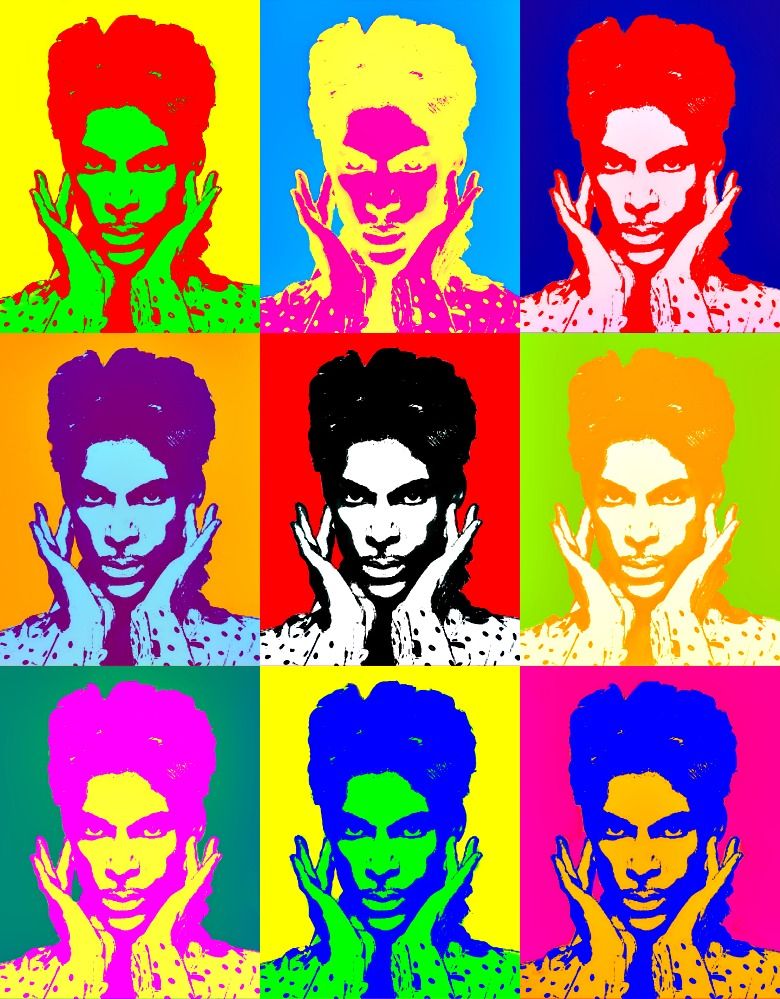

The photo of Prince on the left above was taken by Lynn Goldsmith in 1981. Andy Warhol used this photo to create an unauthorized series of silkscreens – the “Prince Series” – which appears to the right of Goldsmith’s photo.
Goldsmith is a well-known rock-and-roll celebrity photographer. When Warhol passed away in 1987, the Prince Series became the property of the Warhol Foundation. Goldsmith was unaware of its existence until Condé Nast licensed one of the silkscreens for the cover of a Prince tribute magazine following Prince’s death in 2016. When Goldsmith learned that Warhol had copied her photo, she sued the Warhol Foundation for copyright infringement.
Warhol’s defense in Goldsmith’s case is fair use – specifically the “transformative” branch of copyright fair use. This has its origin in Campbell v. Accuf-Rose, a 1994 case involving a parody of Roy Orbison’s song “Pretty Woman.” The Supreme Court held that a new work of art is “transformative” for purposes of copyright fair use if it “adds something new, with a further purpose or different character, altering the first with new expression, meaning or message.”
This legal standard has proven to be difficult in application. The Warhol case is a good example.
The District Court and Second Circuit Decisions in Warhol
A Southern District of New York federal district court judge agreed with Warhol’s defense that the Prince Series was “transformative.” The judge reasoned that while Goldsmith’s photo portrays Prince as “not a comfortable person” and a “vulnerable human being,” the Prince Series portrays the musician as an “iconic, larger-than-life figure.” Comparing the works side-by-side, the district court concluded that a reasonable observer would perceive that Warhol’s work has a “different character, a new expression, and employs new aesthetics with [distinct] creative and communicative results” when compared to the Goldsmith original.
The Second Circuit Court of Appeals disagreed. It held that to be transformative the Warhol Series must –
. . . at a bare minimum, comprise something more than the imposition of another artist’s style on the primary work such that the secondary work remains both recognizably deriving from, and retaining the essential elements of, its source material. The judge must examine whether the secondary work’s use of its source material is in service of a fundamentally different and new artistic purpose and character, such that the secondary work stands apart from the raw material used to create it.
The Warhol Series failed to satisfy this standard, and therefore was not protected by fair use.
Interest in the case has been high since the Second Circuit issued its decision last year. It increased when the Supreme Court agreed to hear Warhol’s appeal and has gone into overdrive as the case approaches oral argument on October 12, 2022.
Google v. Oracle: Will It Matter to the Warhol Appeal?
An important consideration is how the Court’s 2021 ruling in Google v. Oracle may impact this case. Google is the only other time the Court has addressed fair use since creating the “transformative” test in 1994. However, while the Court found fair use in Google, that case was far from the core of copyright – visual art, music and writings. Google involved Google’s copying and reimplementation of Oracle’s Java API user interface. The Court found this to be fair use because it was socially beneficial – it allowed programmers familiar with the Java API to use their knowledge and experience to program Google’s Android operating system, rather than having to learn a new API.
To contact Lee Gesmer, fill out the form below.
Warhol argued that Google helped tip the scales in its favor, but the Second Circuit disagreed, stating that Oracle was “unlikely to work a dramatic change in the analysis of established principles as applied to a traditional area of copyrighted artistic expression.”
Will the Supreme Court affirm or reverse the Second Circuit? Setting aside Google (which is something of a one-off for copyright fair use), will the Court expand fair use, contract it or tread lightly and leave it largely intact?
Fair Use at the Supreme Court Without Justice Breyer
In considering these questions it’s worth noting that changes in the Court’s make-up may be a factor.
Until his recent retirement Justice Breyer had focused on intellectual property law more than any other member of the Court. He was the most liberal justice on IP issues and he wrote the majority pro-fair use decision in Google.
Given the make-up of the Court post-Breyer, a little armchair kremlinology is in order.
Based on their dissent in Google it’s likely that Justices Thomas and Alito will vote to uphold the Second Circuit’s decision for Goldsmith. Under their view of fair use the key factor is the effect of Warhol’s silkscreens on the market for Goldsmith’s photo. The Second Circuit found that Warhol’s copies negatively impacted the market for Goldsmith’s photo, and Justices Thomas and Alito are likely to overweight this factor in concluding that Warhol’s silkscreens are not protected by fair use.
The remaining justices on the “conservative” wing of the Court – Gorsuch, Kavanaugh and Barrett – favor “textualism,” the philosophy that places primary weight on the normal meanings of a statute’s words, rather than public policy. It’s worth noting that the word “transformative” appears nowhere in the Copyright Act, and is something of a judicial gloss on the statutory fair use factors. Without the leadership and expertise of Justice Breyer and based on an application of textualism, these three justices may side with Justice Thomas’s view of fair use, in which case Warhol will lose on appeal by at least a 5-4 vote. If “swing conservative” Chief Justice Roberts joins the conservative wing, Warhol will lose at least 6-3.
Conclusion
Will this case change the direction of fair use? We won’t know until the Supreme Court issues its decision, likely in early 2023. In the meantime, tune in to the oral argument in October and judge for yourself.
Click below to read more about Lee Gesmer
Check out some of our latest publications.
- Client Success Stories – Wicked Good Cookies
- Client Success Stories – BlueFin Technology Partners-Holios
- Trademark Protection and Cannabis Products
- What Does The Starbucks DEI Lawsuit Mean For My Company?
- Client Success Stories – Opti
- Client Success Stories – CrowdComfort
- Rebranding and Protecting Your Trademarks
- What is Due Diligence in a Financing or Acquisition Transaction and Why Is It Important?
- Gesmer Attorneys Recognized as 2023 Super Lawyers
